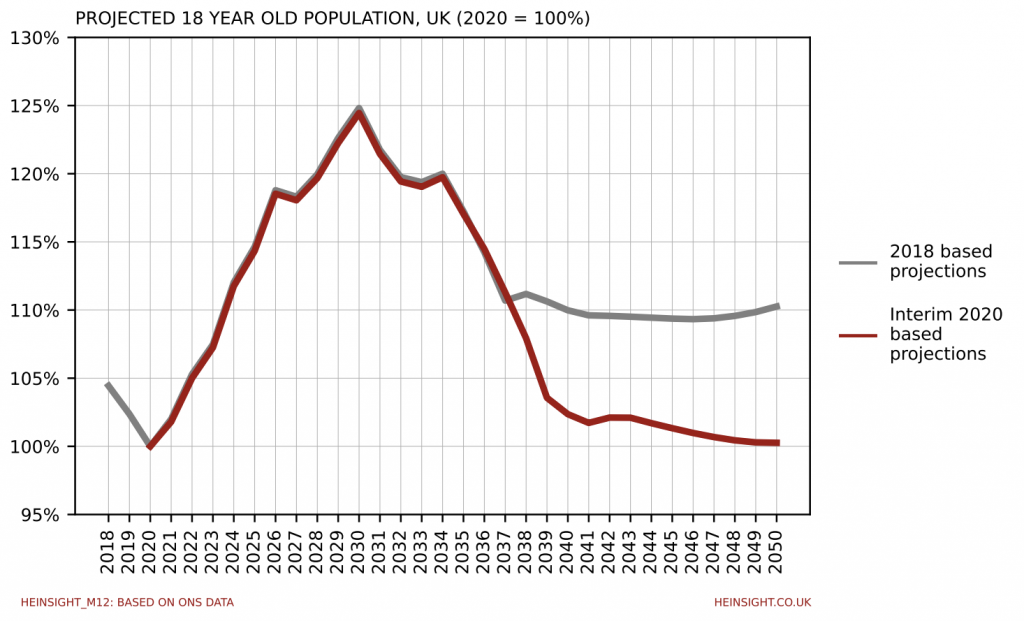The Office for National Statistics this week released its ‘2020 based interim’ UK population projections, offering an update on the previous ‘2018 based’ series. The dramatic increase in the number of 18 years olds as we progress through this decade that was indicated by previous projections – the demographic surge that is now well known to the sector – has gone no where and has been subject to only very minor revisions. Longer term however these new projections look strikingly different to what we’ve seen before, with major downward revisions to the anticipated 18 year old population from the late-2030s onwards.
The ONS previously anticipated the 18 year old population of 2040 to be 10.0% larger than that of 2020 but it now estimates it to be only 2.4% larger. Meanwhile whilst it had previously thought 2040 would be close to the post-surge trough, with some renewed growth having been achieved by 2050, it now expects decline to continue throughout the 2040s. By the time we reach 2050 it’s now expected that the 18 year old population will only be 0.3% larger than it was in 2020.

It’s no surprise that the dramatic revisions to these projections begin from 2038, seeing as that’s precisely the point at which we start talking about people that had yet to be born in 2020. The small uplift in 2037 is worth around 6,500 18 year olds and is likely largely due to the ONS’s elevated assumptions of net inbound migration (from 190,000 per year to 205,000 per year).
Once we have to begin estimating future births however we encounter some serious changes likely resulting from the ONS adjusting its assumption of the average number of children per woman down from 1.78 to 1.59. The outcome is 21,000 fewer 18 year olds in 2038, 52,000 fewer in 2040 and 69,000 fewer in 2050.

Whilst the sector can be confident that the anticipated demographic surge will still arrive as promised, what the future looks like after the surge falls away now looks very different. It seems that demographics may well turn against the sector as quickly as they started helping it.
Demographics are of course only one factor among many that determine demand for HE. University leaders already have their hands full trying to understand any number of potential changes to the funding policy landscape that could boost or curtail demand long before we reach the 2040s. Providers looking to take decisions soon to lay the groundwork for success 20 years from now, as many need to, should however take this opportunity to both revisit their assumptions and prepare themselves for this to not be the last time that the future changes before we reach it.
